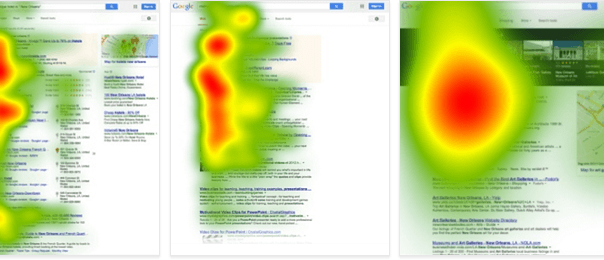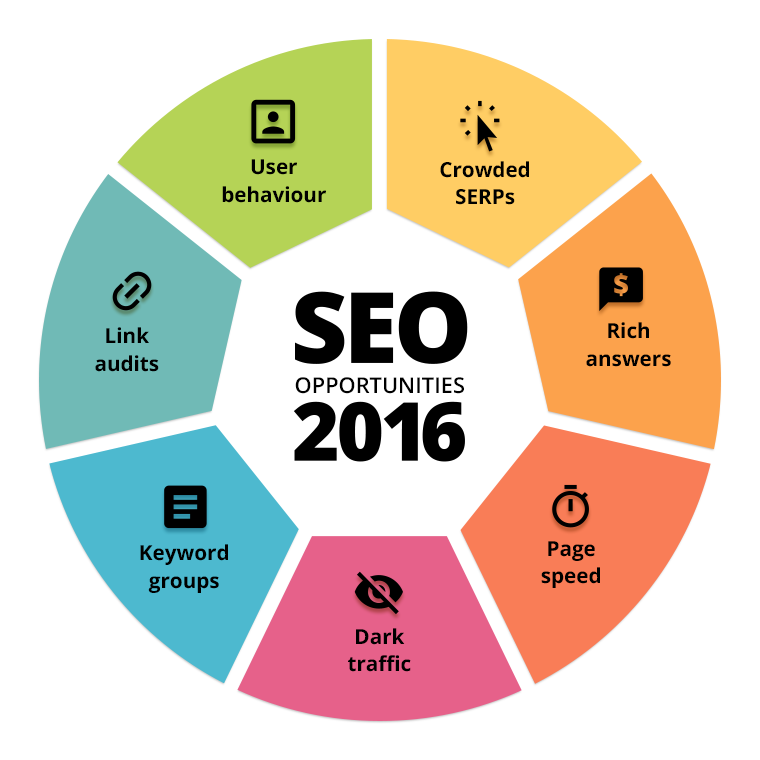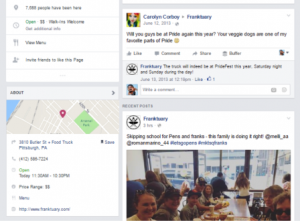
The changing Google landscape brings extra value to those who adapt
Google updates are always a two-edged sword. Those who rely on elderly strategies may find their rankings falling like the last leaves of winter, while traffic slows like the streets of Manhattan on the Friday before Christmas. On the other hand, those that adapt and upgrade their strategies will gain a competitive edge, shining in the SERPs as bright as Times Square on New Year’s Eve.
On the Link-Assistant.Com’s blog, we recently summed up everything we learned by attending SMX East and Pubcon, two of the largest and most trusted SEO conferences in the States. Based on this as well on what we foresee as potential moves by Google next year – here are the seven important shifts we’ve identified, with strategies to turn pitfalls into opportunities.
- Crowded SERPs burke top organic rankings.
- Rich answers are rising in importance.
- Page speed takes more precedence.
- Dark traffic makes analytics even harder.
- Keywords are not dead, but you should use them differently.
- Be aware of link penalties and remove low-quality links promptly.
- User behavior will soon affect your rank.
Now, let’s dig into each of these in more detail.
1. Crowded SERPs Burke Top Organic Rankings
In order to get searchers the information they want faster, Google keeps piling on elements that provide answers directly on the first page of search results. These page elements include paid ads, local packs, carousel results, knowledge graphs and rich snippets. They’re all attention-grabbing, even if they don’t necessarily end up draining away clicks from the top organic results.
A study by Mediative tracked searchers’ eye movement and eventual clicks across different SERPs. It found that these distracting page elements caused searchers to interact with the SERP in very different ways from query to query.
Let’s take a look at three different SERPs. One has a local pack; one includes a paid ads pack; and one shows a carousel. The heat map shows how the views and clicks are distributed:
These heat maps tell us that simple keyword search volume is no longer a reliable metric for predicting how much organic traffic one keyword will generate for your website. Before you invest effort in optimizing your site for a particular keyword, take a look at the search result page. If there are SERP elements that could drain clicks from your organic listing, it might make more sense to optimize for a different keyword that wouldn’t get so much competition from Google.
The Opportunity:
The upside of this is that you now have more opportunities for winning organic clicks by muscling your way into those top spots. By optimizing your pages and site, you might find opportunities to squeeze into the local pack results, for example. Another tactic is to launch a Google AdWords campaign for key queries where Google results outweigh organic results.
2. Rich Answers Are Rising In Importance
A rich answer provides a direct answer to a question-based query, eliminating the need to click through to find the answer. In a study by Stone Temple Consulting, Google provided rich answers for 35 percent of search queries – a 38 percent increase in the past 6 months. (This study looked at queries that were likely to result in a rich answer; the overall percentage of queries that would return rich answers is much lower.) But there’s no reason to think this trend won’t continue.
Most often, rich answers come from public-domain data or databases licensed to Google. So, if your own SEO strategy is built on public-domain traffic, it will be more difficult to compete with rich answers.
The Opportunity:
If your site provides high-quality, proprietary content that can help Google answer common searchers’ questions, rich answers are an opportunity for you. Google uses external data for 75 percent of rich answers – and includes a link to its source, according to Stone Temple. Getting your page featured in a rich answer can do a lot to increase your traffic. The clickthrough rate for clickable rich answers is around two times better than that for the regular search results page that doesn’t contain one.
Getting featured in rich answers is completely doable. Your site authority does not need to be high; you just have to provide a clear, excellent answer. To do this, begin with long-tail keyword research in order to find some of the questions in your niche that are most likely to be searched. Then, write some content that directly answers these questions. Getting play as a rich answer depends on the structure of your answer. Begin it with the question itself, and then write direct answer to it. To entice more clicks, make sure your article is rich with context and adds information to the initial answer.
3. Page Speed Takes More Precedence
This sometimes-neglected optimization tactic can pay off in ROI aside from SEO. Adam Audette, senior vice president of organic search at Merkle, calculates that, if an ecommerce site makes $100,000 per day, a one-second load delay equites to $2.5 million in lost revenue annually. When it comes to SEO, page speed definitely is a ranking factor: All other things being equal, a site that loads quicker will outrank a competing site. In addition, Google allocates a specific amount of time to crawling individual websites. Slow-loading sites can waste the crawler’s time and cut the indexing short before it’s reached all the good stuff. For a larger site, this could mean fewer pages get indexed by Google resulting in fewer opportunities to appear in SERPs.
The Opportunity:
Page speed is an increasingly important aspect of the user experience, and it directly influences conversions. Visitors expect sites to load fast in two seconds or less. And every additional second of load time decreases conversion by 7 percent, according to Kissmetrics.
Conversely, every second load time is shortened can increase conversions. Intuit found that conversions increased by 2 percent when load time was reduced from six to five seconds. It found a 1 percent increase in the conversion rate when load time dropped from three seconds to two seconds, according to Moz.com.
4. Dark Traffic Makes Analytics Even Harder
If your Google Analytics traffic report shows high volumes of direct traffic to pages deep in your website, the problem is “dark traffic.”
Dark traffic is, for the most part, simply any traffic that Google Analytics is unable to identify. Because Google was founded on the idea that links from other sites were indicators of page value, it’s become too focused on traffic from website links. But more and more site traffic now comes from other sources. When Google doesn’t understand where a site visit came from, it records it as direct traffic.
Social media is now sending substantial amounts of traffic to websites, and email is another large source of traffic, especially when it comes to merchants. The rise of mobile apps has created another increase in dark traffic, as app users click on ads within the apps. Image search, messaging apps and even the Android Search app are all put into the direct traffic category.
As this so-called direct traffic, which is really dark traffic, grows in volume, your Google Analytics reports get less precise: Google reports growth in direct traffic when this growth is actually due to your efforts to grow traffic through other channels. Dark traffic makes tracking your marketing activities even more complicated.
The Opportunity:
All publishers are struggling with this, so anything you can do to better understand your dark traffic will help you compete. The only way to get a better sense of how all channels are working together is to produce a direct traffic report in Google Analytics. Next, filter out traffic to pages that are likely to be visited directly. It’s pretty unlikely, for example, that someone would type in a long URL to get to a page deep inside your site. On the other hand, your home page or the front pages of major content sections might actually receive direct traffic. This rather kludgy process segments dark traffic from the genuine direct traffic, allowing you to better estimate the share of dark traffic to your website.
5. Keywords Are Still Important, But You Should Use Them Differently
Keyword research (with tools like Rank Tracker) still should be the basis of your SEO and content-marketing campaigns. However, Google’s Hummingbird update allows Google to understand the meaning behind a search query and deliver results that include keywords that may be different from the query but the same in meaning. So, for example, a low-content page that’s heavily optimized for the keyword “turkey” might not rank as highly as a content-rich page about Thanksgiving menu planning. Because of this, keyword research requires identifying the groups of thematically connected terms your pages will target.
Instead of optimizing each page for a different keyword or phrase, you will need to optimize for keyword groups.
The Opportunity:
This is actually good news for white-hat SEOs. You can focus more time and attention on building valuable content that will please searchers as well as searchbots.
6. Be Aware Of Link Penalties And Remove Low-quality Links Promptly
Google has gotten meaner and meaner about bad links. The best response is to be proactive, removing low-quality links even if you haven’t been penalized.
There is good news, even if your site has already been penalized. Removing link penalties is difficult but absolutely possible. You must be relentless in getting rid of every single harmful link. You can’t fool Google and you’ll waste valuable time if you submit your reconsideration request before your site is spotless. Once you’ve done the initial cleanup, make sure to engage in regular link audits and cleanups.
The Opportunity:
We know. Keeping your site’s links cleaned up may seem more like a chore than an opportunity and it’s not an easy task. But this is your opportunity to achieve higher rankings by taking the time and effort that some of your competitors won’t.
7. User Behavior Will Soon Affect Your Rank
Google denies that user behavior factors affect rankings, but many experiments seem to show that it does. In addition, Google recently acknowledged that it has begun to use machine learning to identify the most relevant search results. Machine learning could help Google rank pages using broader criteria than ever before.
While clickthrough rates are the most immediate behavioral determinant of value, engagement rates indicate that searchers find your pages useful. The longer someone spends on a page after clicking through from search, the more likely it is that he or she is actually reading or viewing content on the page.
Google has not officially said that social media sharing is an official ranking factor. However, with the popularity of social media, it’s very likely that it’s already looking at this. It makes perfect sense: People share stuff they think is valuable.
Finally, allowing site visitors to complete tasks quickly could be an important ranking factor.
The Opportunity:
For some of you, this is a big challenge as well as a big opportunity to completely rethink your approach to search marketing and SEO. These potential changes to Google’s algorithms would have one ultimate goal: determining the overall quality of a particular website. This changes the SEO game from extreme page-by-page optimization to overall quality. If some of your pages perform well compared to competitors,’ all of your sites’ pages could be up-ranked in search results.
Instead of obsessing about individual keywords, you now have the opportunity to create a useful and unique experience for searchers and to outrank those OCD competitors who are still wasting time poring over keyword lists.
Conclusion
The world of SEO has changed and changed again. We think it’s a better world in which search results that provide value to customers rank highest. But it’s not an either/or world. Your SEO strategy must please both bots and humans. Keeping one eye on the requirements of search engines and the other eye on the needs of searchers is your best resolution for 2016.
Now Read:
- 12 Quotes From Matt Cutts That Changed Link Building
- 12 Months Of Content Event Triggers For Your Editorial Calendar
- 20 Tactics to Drive 200,000 More Monthly Visitors To Your Blog
Next Steps:
- 12 Quotes From Matt Cutts That Changed Link Building
- 12 Months Of Content Event Triggers For Your Editorial Calendar
- 20 Tactics to Drive 200,000 More Monthly Visitors To Your Blog
Hand-Picked Related Articles:
- 12 Quotes From Matt Cutts That Changed Link Building
- 12 Months Of Content Event Triggers For Your Editorial Calendar
- 20 Tactics to Drive 200,000 More Monthly Visitors To Your Blog
* Lead image adapted from kev lewis. Image credits: Gustavo Frazao / Shutterstock, Aleh Barysevich, a screenshot from the Mediatives presentation.
7 New SEO Opportunities In 2016
The post 7 New SEO Opportunities In 2016 appeared first on Search Engine People Blog.
(178)
Report Post







